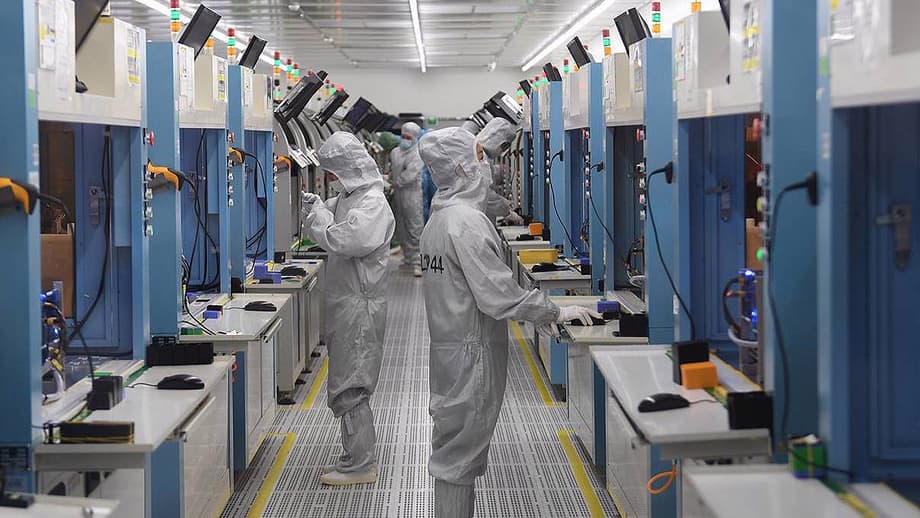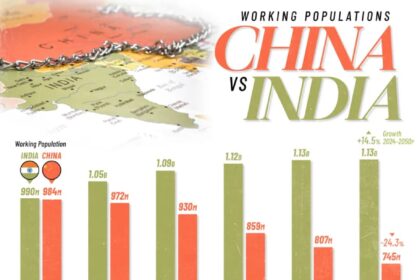A race reshaped by export controls
For seven years, Washington has tightened the screws on the flow of chips, software, and factory tools to China. The original goal was clear. Starve China of the most advanced semiconductors and the machinery and software needed to make them, then slow its progress in artificial intelligence, high performance computing, and military systems. The effort disrupted supply chains and denied Chinese firms ready access to the most powerful processors. It also sparked a nationwide sprint in China to redesign, retool, and replace almost every piece of the stack from chip design to packaging.
- A race reshaped by export controls
- What Washington tried to block and how the rules evolved
- China’s playbook for resilience and speed
- Workarounds and breakthroughs under pressure
- Where the bottlenecks remain
- The global business fallout
- AI demand is rewriting market power
- Policy tradeoffs and the enforcement challenge
- What to watch next
- Key Points
The result is a more complicated picture than a simple chokehold. Export controls raised costs and created delays inside China, yet they also set off a wave of substitution, new alliances, and technical workarounds. Companies like Huawei and SMIC have pushed into advanced design and manufacturing. New funds from city governments and state investors are pouring into chip equipment, materials, and packaging. Domestic champions in memory and chip tools have gained ground. The next phase of the contest will be defined by China’s ability to scale these gains and by how the United States refines controls while investing at home.
Semiconductors remain the backbone of modern life. They power cloud data centers, phones, cars, factory robots, and weapons systems. Control over advanced chips and the means to build them is now treated as a strategic asset. Both sides are moving quickly, but with different starting points and constraints. China still relies on foreign tools at the leading edge, while the United States and its allies face a risk that broad controls shrink their own access to the world’s largest chip market and speed up China’s push for self reliance.
What Washington tried to block and how the rules evolved
American controls arrived in waves. Early measures in 2018 and 2019 put Chinese firms on an Entity List that required licenses for US technology. In 2022, the US widened restrictions to advanced AI processors, data center GPUs, and key chipmaking equipment. Rules also reached non US companies through the Foreign Direct Product Rule, extending controls to chips designed with US software or made with US tools. Over 2023 and 2024, curbs tightened again, adding more equipment categories, expanding the list of Chinese entities, and touching high bandwidth memory, design software, and even cloud access for training AI models. By early 2025, Washington introduced a tiered framework that differentiated access by country and company, while some proposals sought to limit shipments to a long list of nations.
These steps hit revenues for American suppliers and raised global uncertainty. Leading US GPU vendors designed lower performance chips for China to stay within the rules, only to see later revisions close those windows. US toolmakers faced license delays and shrinking visibility into a market where Chinese buyers once accounted for a large share of sales. At the same time, controls on advanced chipmaking equipment gained traction through coordination with allies in the Netherlands and Japan. Choke points in lithography and certain deposition and etch tools became the most effective levers.
Chips versus tools
Finished chips are small, easy to move, and easy to hide in transshipment. Factory tools and the complex support they require are harder to smuggle and easier to police. That is why equipment controls bite more deeply than chip controls. Even so, enforcement remains a challenge. Chinese buyers have used intermediaries and friendly jurisdictions to reroute some advanced parts. The landscape shifts as rules evolve, and each change brings new attempts to comply, adapt, or circumvent.
China’s playbook for resilience and speed
Beijing’s response has mixed state coordination with bottom up competition. National strategy set the direction, but local governments, private firms, and state investors are all racing to fill gaps. The aim is to build a near complete ecosystem at mature and mid level nodes, then push the frontier where possible with alternative methods and heavy investment.
Money and state coordination
China reorganized science and technology management to centralize funding and oversight for strategic fields, including semiconductors. A leading group chaired at the vice premier level sets priorities, while the National IC Industry Investment Fund and city level funds back projects in equipment, materials, and advanced packaging. China’s research output in semiconductor design and manufacturing has surged, and research teams are pursuing unconventional ideas in materials and architectures, not just following the path set by leading Western and Asian companies.
Local rivalry as engine
City and provincial governments have become fierce backers of domestic chip projects. Shenzhen launched a multi year fund for design, equipment, and packaging. Shanghai backed chip equipment ventures and larger private equity funds with a focus on local champions. Hangzhou and Hubei have rolled out major commitments, including programs tied to memory leader YMTC. This rivalry draws capital and talent, accelerates pilot lines, and keeps pressure on teams to hit technical milestones.
Alliances built around domestic GPUs
As controls squeezed access to top tier US GPUs, Chinese cloud firms, AI startups, and chip designers formed alliances to build a software and hardware stack around domestic accelerators. An industry group launched in Shanghai to promote local processors for AI training reflects that push. Firms are tuning frameworks, compilers, and model toolchains for Huawei’s Ascend line and other local accelerators, while prominent AI developers report training large models on Chinese compute clusters.
Wei Shaojun, who leads the integrated circuit design branch of China’s main semiconductor association, described the mood inside the industry in blunt terms before calling for a two track strategy of autonomy and global engagement.
“The more others suppress us, the more we need to be self reliant. But self reliance does not mean self isolation.”
Workarounds and breakthroughs under pressure
Chinese firms have tried to close the gap through a mix of process ingenuity, system level design, and heavy investment in memory and packaging. The headline advances do not remove every bottleneck, but they show that progress is possible without the exact set of tools now restricted by allies.
From DUV tricks to advanced packaging
SMIC has produced 7 nanometer class chips using deep ultraviolet lithography (DUV), a toolset that predates the cutting edge gear known as extreme ultraviolet (EUV). DUV multi patterning is slower and more expensive, but it can reach smaller features with enough engineering. Reports suggest SMIC is pushing toward denser nodes while working around limits in line width control and yield. On top of process work, Chinese designers are turning to chiplet architectures and advanced packaging to join multiple dies in one module, a way to improve performance without relying only on a single monolithic die.
Memory and storage
YMTC has climbed the staircase in three dimensional NAND, shipping products near the top of the global layer counts. Gains in memory density matter for data centers and phones, and they support domestic supply security even as high bandwidth memory remains a choke point. Chinese makers of DRAM and specialty memory have also improved, backed by state support and a growing base of local equipment.
Design, EDA, and open architectures
Design houses under the Huawei umbrella and others are targeting AI accelerators built on standard instruction sets and open alternatives such as RISC V. As access to top tier Western electronic design automation tools tightened, investment in domestic EDA surged. Chinese engineers are building toolchains for place and route, verification, and analog design, and universities are exploring new device concepts, including carbon nanotube based logic. These experiments may not reach mass production soon, but they can seed future breakthroughs.
AI models that do more with less
One of the starkest signs of adaptation has come from Chinese AI labs that trained competitive models on less powerful GPUs. DeepSeek presented a large language model with a surprisingly low reported compute budget, using efficiency gains in data curation, training schedules, and inference tricks. Some claims are debated, yet the broader point stands. Constraints forced teams to optimize software, data pipelines, and model design, then wring more performance from mid tier hardware.
Where the bottlenecks remain
Even after a burst of progress, China still faces critical gaps. Lithography is the most visible. ASML remains the sole supplier of EUV systems, and those tools are off limits to Chinese fabs. Domestic lithography maker SMEE is improving at mature and mid range nodes, but it sits far behind in the most advanced scanners. Yields at leading nodes remain difficult without the full suite of allied tools and resists. The cumulative effect shows up in cost per wafer and throughput, where Taiwan and Korea maintain a strong lead.
Memory supplies have improved in NAND, but high bandwidth memory for AI is tight and hard to replicate at the top tier. Software ecosystems around domestic GPUs are growing, yet they still lag vendor libraries and tools that have matured for many years on American chips. Access to top end EDA features is constrained by controls, which slows time to market and complicates verification. Talent is a constraint as well. China has many engineers, but experience in building and running leading fabs at scale is rare outside a handful of firms.
Equipment breadth is another limitation. China has leaders in etch and deposition, but gaps remain in metrology, inspection, and photoresists. Each missing piece adds time, cost, and uncertainty. These frictions are why advanced nodes made with DUV tricks are pricey and hard to scale compared to rivals using EUV.
The global business fallout
Export controls changed the economics for many Western firms. US chip designers saw a major market cut off, then re cut by policy adjustments. Complex rule changes, long license timelines, and changing thresholds made planning difficult. Some firms designed China only products that later fell outside revised limits, leaving inventory in limbo. Toolmakers saw demand surge in friendly markets but lost visibility into service contracts and upgrades in China. The loss of China market share also opened room for Chinese suppliers to move up.
Nvidia’s chief executive, Jensen Huang, has been candid about the scale of the shift in China for his company. After Washington expanded limits, he warned that the company’s sales in China were collapsing and pointed to the broader strategic cost of shutting out the world’s largest AI market.
“China is essentially closed to us now. We went from almost the entire market to zero.”
That pain is the mirror image of China’s forced adaptation. As American companies lose market access, Chinese firms gain a reason to buy domestic alternatives. That, in turn, gives Chinese chip designers and toolmakers room to scale, which reduces costs and improves performance over time. It is a feedback loop that cuts both ways.
AI demand is rewriting market power
Training large AI models has become the main driver of demand for advanced chips. The push to find non US GPUs accelerated as access to leading American parts closed. Huawei’s Ascend line is now a focal point for Chinese clouds and AI developers, and a coalition of domestic chip and AI firms is coordinating software support, performance tuning, and ecosystem outreach. More Chinese AI labs claim they can train state of the art models on local compute clusters tied to domestic accelerators.
Chinese AI company iFlytek has described training its latest reasoning model entirely on domestic compute, a symbolic milestone for a sector that once depended on US GPUs.
“Our Spark X1 model was trained on China’s own computational infrastructure.”
Equipment makers are also advocating patience. The head of a leading Chinese etch tool supplier has told investors that China can close much of the gap with top global players over a period of years, not decades.
“Give us five to ten years, and we will stand with the best.”
Those bets come with risk, but they show how AI demand and long term investment are aligning. If domestic accelerators reach parity in some tasks, Chinese buyers will move faster to replace imported parts, and the software ecosystem will follow.
Policy tradeoffs and the enforcement challenge
For the United States, the central tradeoff is clear. Controls can slow China at the edge, but they also cut US firms off from growth markets that fund research and scale. They push neutral customers to look for Chinese suppliers and encourage Chinese firms to invest across the stack. That is why many policy analysts argue for precise rules, strong enforcement on factory tools, and deeper allied cooperation, paired with more investment in US research, workforce, and manufacturing capacity.
Enforcement is the hard part. Chips can be rerouted through third countries. Cloud access is hard to police. Entity lists and license processes require constant updates. Meanwhile China is not standing still. It has used countermeasures in critical minerals and encouraged a switch to domestic EDA and chip equipment. The longer the contest runs, the more permanent these shifts become.
That does not mean controls are useless. They can buy time, especially on the tool side where EUV and high end inspection systems are unique. The question is how to use that window. Public investment in semiconductor research centers, grants for new fabs, and programs that attract global talent can make the difference between a temporary lead and a durable one.
What to watch next
Several markers will reveal the trajectory. First, look at production yields and volumes for Chinese 7 nanometer class and denser chips. Second, track domestic high bandwidth memory and packaging advances, two areas that decide AI system performance. Third, watch software ecosystem maturity around domestic accelerators, including compilers, frameworks, and libraries. Fourth, follow enforcement on transshipment and cloud access. Fifth, monitor allied coordination on tool controls and service restrictions. Finally, keep an eye on how US policy balances controls with long term investments and market access for its own firms.
If China keeps lifting capacity at mature and mid level nodes while pushing selected frontiers through packaging and system level design, it will be able to supply much of its own demand and compete for price sensitive segments abroad. If the United States and allies sharpen controls on equipment and double down on their own industrial strength, they can preserve leadership in the most advanced nodes and in the tools that enable them.
Key Points
- US export controls since 2018 have targeted advanced chips, design software, and semiconductor tools, with tighter rules arriving in 2022 through 2025.
- Controls on equipment are harder to evade than controls on finished chips, making lithography and inspection tools the most effective chokepoints.
- China accelerated domestic efforts, funding design, equipment, and packaging while reorganizing national oversight and using city level funds to draw talent and capital.
- Workarounds include DUV multi patterning for denser nodes, chiplets, and rapid gains in memory and advanced packaging.
- Gaps remain in EUV lithography, high bandwidth memory, EDA access, and yields at advanced nodes, as well as experience in large scale high volume fabs.
- US firms lost major sales in China, while Chinese buyers shifted to domestic alternatives, helping local suppliers scale.
- AI demand is driving alliances around domestic accelerators, with Chinese labs reporting large models trained on local compute clusters.
- Policy choices now hinge on precise controls, strong enforcement on tools, and sizable investment in US research, workforce, and manufacturing.
- Key signals ahead include Chinese yields at advanced nodes, domestic HBM progress, ecosystem maturity around local GPUs, and allied cooperation on tool controls.












